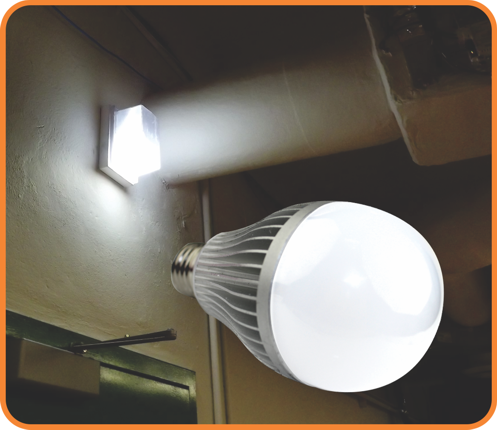
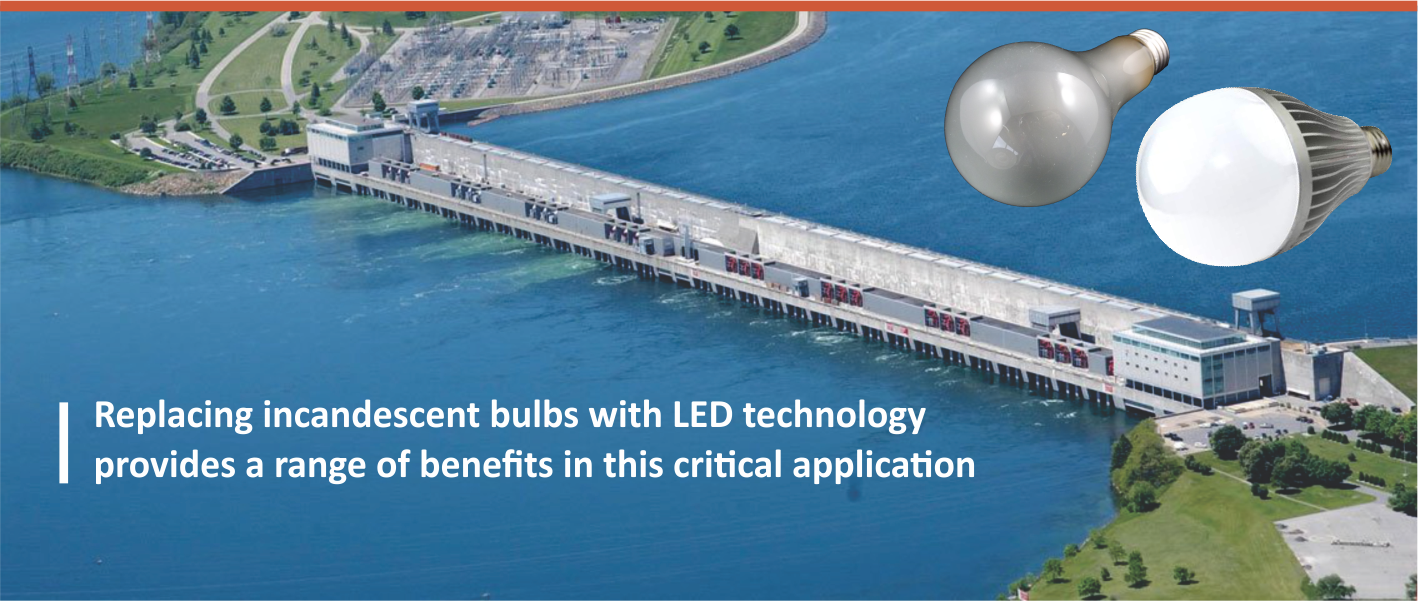
Overview
Emergency backup power at RH Saunders GS is provided by batteries which supply energy to critical functions at the facility - including to the emergency lighting system. Efficiency is always a concern with lighting systems, so LED lights would seem to fit the bill, but most can’t operate at the higher DC voltages used in emergency systems in Ontario Power Generation (OPG) stations.
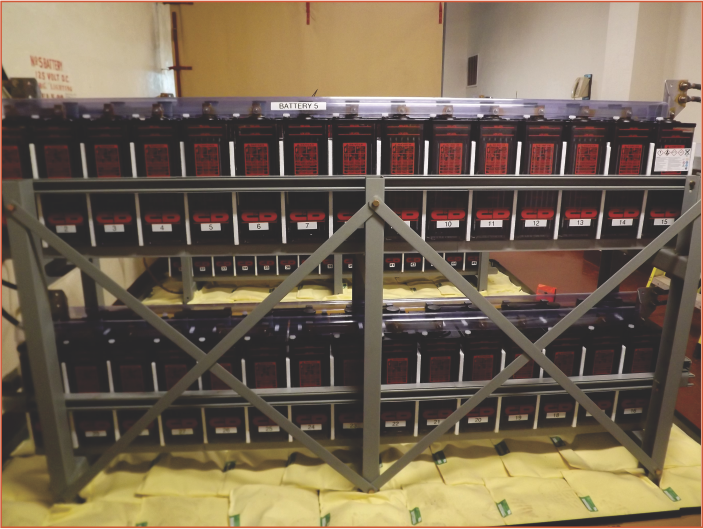
Battery Rack at RH Saunders GS
Description
Like many OPG generating stations, RH Saunders uses 125 VDC backup power.
RH Saunders now houses the Eastern Operations Control Centre, which oversees the power production from 10 OPG hydroelectric stations in the region. The addition of the control centre added to the emergency lighting load and would have required additional battery capacity, had they not switched to lower-current LED lighting.

Challenges
Input Power
LEDs are low-power solid-state devices and are usually fed by specialized constant-current power supplies - LED drivers. Typical LED bulbs operating from AC have built-in AC-DC LED drivers.
The application at RH Saunders requires 125 VDC input, and some of the lighting is dual-input with 125 VAC operation. Some other OPG facilities, such as Lennox GS (who use the same LED emergency lighting) use 250 VDC.
Battery systems also have output voltage fluctuations based on charging-levels, and DC systems must deal with voltage drop. Ideally, these bulbs would operate from 105 through 280 VDC, and from 110 to 130 VAC.
Thermal Performance
LEDs are semiconductors, and their life is depleted by elevated temperatures. The junction temperature of these devices should be kept below 125 degrees Celsius.
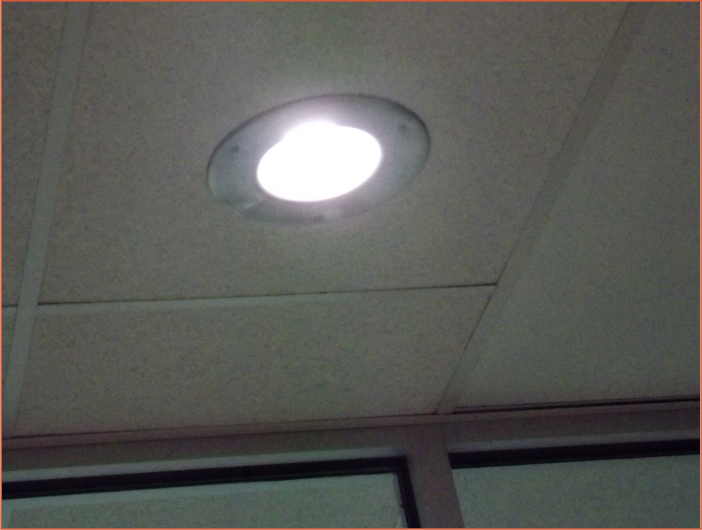
Typical Facility Fixture (with VCC LED Lamp)
Enclosed Fixtures
Fully-enclosed fixtures are used in some of the emergency lighting system at RH Saunders GS, and are typical at OPG generating stations. Fully enclosed fixtures provide protection for the bulb, as well as for personnel - if a bulb should shatter - which is not uncommon for traditional incandescent lamps. These enclosures raise the temperature within when bulbs are operating, through self-heating, especially in the typical downward orientation. This heating can degrade the operating life of any bulb active within these enclosures.
Safety Approvals
OPG rightly requires safety authority listings for all applicable electrical components and systems throughout its facilities, and these systems and components are inspected by independent authorities.
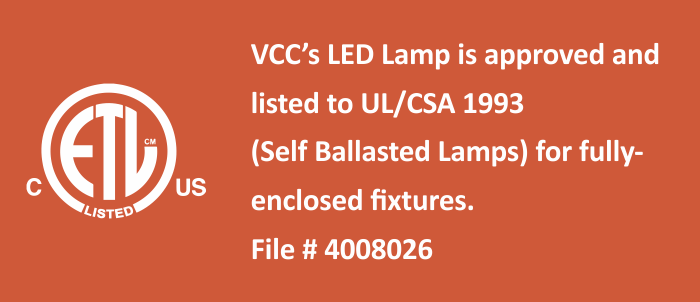
Solutions
VCC custom-designed the LED lamp for OPG considering all of the challenges and drawing on their years of experience in solid state indication and lighting for demanding applications. The LED driver had to accommodate the wide range of AC and DC voltages demanded and desired of this lamp. These electronics also incorporate the temperature sensing and fold-back circuitry to protect the LED from over-temperature conditions that are exacerbated by the enclosed fixture. VCC had extensive testing performed by a third-party authority and the design was revised and finally passed all requirements of UL 1993 (Self-Ballasted Lamps) for fully-enclosed fixtures.
Benefits
Easy Retrofit
The VCC replacement bulb has a standard E26 base, and a standard A21 shape, as well as being able to operate in the standard enclosed fixtures and with the range of input voltages that OPG uses. So, they are form, fit, and function compatible with the existing bulbs, and can be replaced on a fixture-by-fixture basis.
Energy Savings
RH Saunders is using the VCC LED lamp to replace primarily 40 W incandescent light bulbs.
The VCC LED lamp is 9W, so it draws less than a quarter of the energy of the 40 W incandescent bulb, but is twice as bright (a 40W incandescent is typically 450 lumens, vs 980 for the VCC LED bulb).
This allowed for the expansion of emergency lighting to the new control center while increasing the hold-up time and providing better lighting throughout.
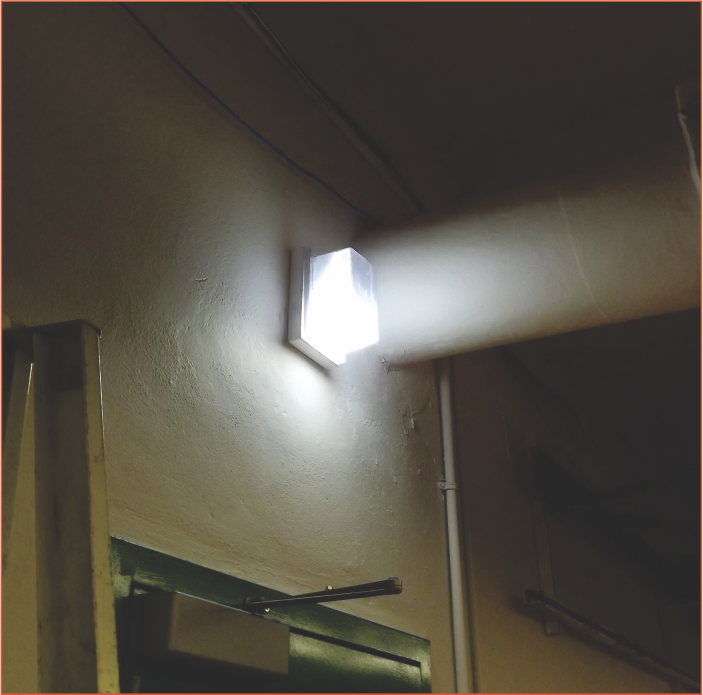
Emergency-Powered Lighting In-Action
Service Life
The incandescent bulbs used at RH Saunders have a rated life of 1000 hours. Standard incandescent bulbs end their life with a flash - a worn-out filament breaks and arcs, usually on turn-on with the surge of power into a resistive and inductive load.
LEDs have no filament, but are a solid-state device with a junction across which the light is generated. LED light output will degenerate over time, but does not burn-out. LED life is rated, typically, to the number of hours from 100% to 70% (L70), or 80% (L80) output. The VCC LED lamp is rated at 50,000 hours to L80. This means that where 50 bulbs may have been replaced in a given year, we may expect 1 in the future.
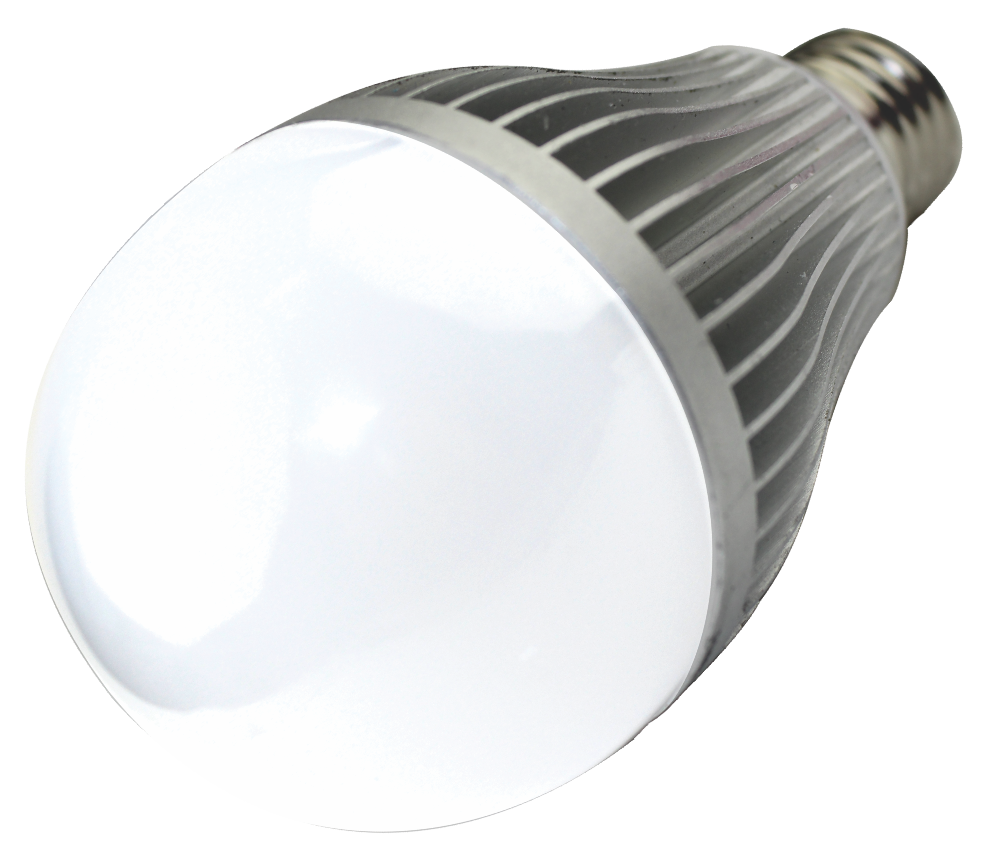
For more information
Brad Jolly
Marketing & Product Manager
IRWIN Industrial
direct 905-882-3864
cell 416-518-8338
bjolly@irwin-ind.com